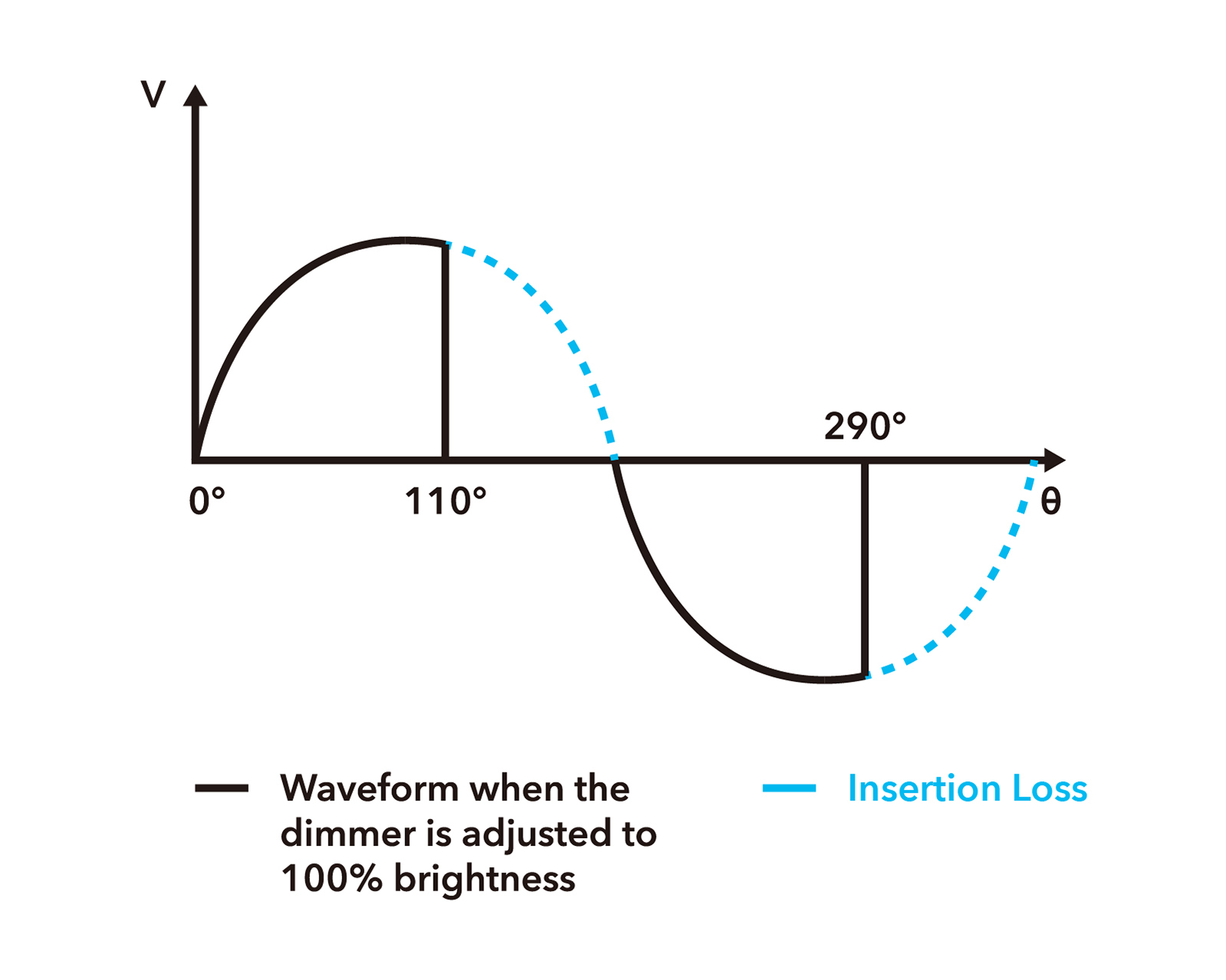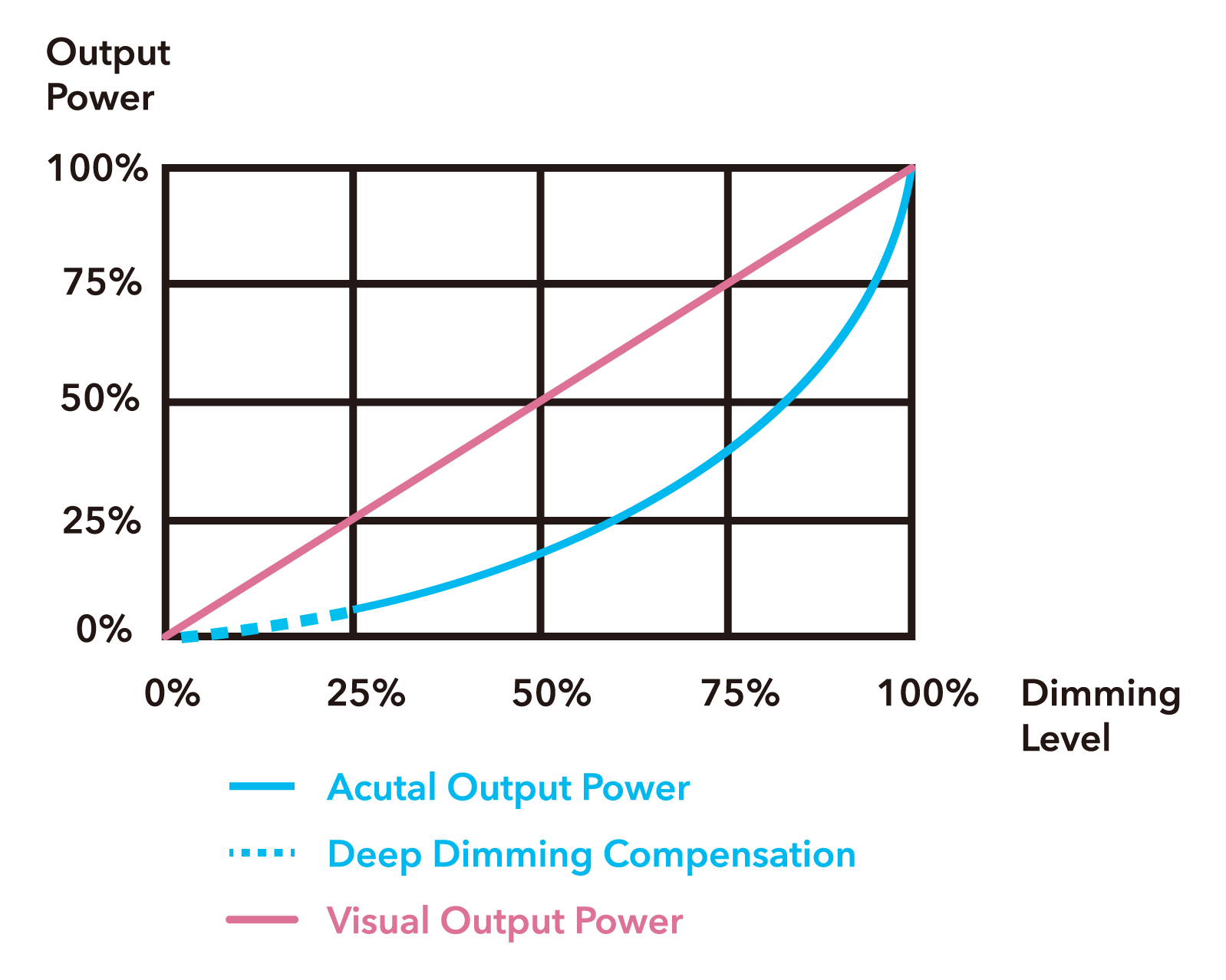-
Dimmer Switch
-
Dimmable Driver
-
Non-Dimmable Driver
-
Light Fixture Dimmer
-
Work Light
-
Smart Home
- Story
- Technology
- Products
- Lighting Knowledge
- Contact
- 繁中 / 簡中
Insertion loss is rather difficult to avoid when dimmer and load are connected to each other in series.
Though electrical power would not be sacrificed, the maximum brightness would lower down, which further influences the dimming performance.
This technology allows the insertion loss to stay below 1%. In cooperation with the deep dimming technology, the dimming range is widened upwards and the minimum brightness is widened downwards, maximizing the dimming range for the best dimming experience.

Phase-cutting dimmers adjust light brightness by controlling the input of electric power. The visual recognition to light difference varies between people and diminishes as brightness gradually increases. Human eyes are relatively insensitive even when brightness increases at high level of brightness, resulting imperceptible difference; on the opposite side, brightness is considered changing too fast at rather low brightness so users would lay more emphasis on adjusting the lights to match their preferences. Every step of output power has to be slightly different at its corresponding brightness level so as to provide the smoothest dimming curve for users.
